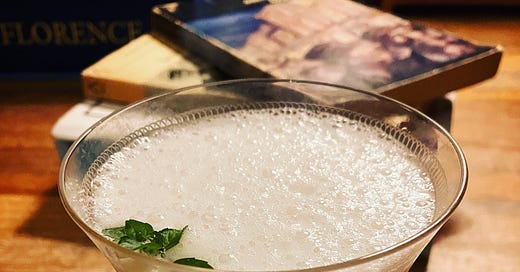The Spirits #95: The Bloom
~ A change to Advertised Proceedings ~ It Being St Patrick's Day ~ Towards an Aviation ~ The Greatest Guitarist in the World ~ Main Character Syndrome ~
~ THE BLOOM ~
50ml Irish whiskey
20ml lemon juice
15ml golden (2:1) sugar syrup
20ml egg white
One teaspoon maraschino
Freeze your glassware. Measure your ingredients into the shaker and shake hard to froth up the egg white. Fill with ice cubes and shake it hard to cool. Strain the mixture through a fine mesh into your now optimally cold glass and garnish wit…
Keep reading with a 7-day free trial
Subscribe to The Spirits to keep reading this post and get 7 days of free access to the full post archives.




